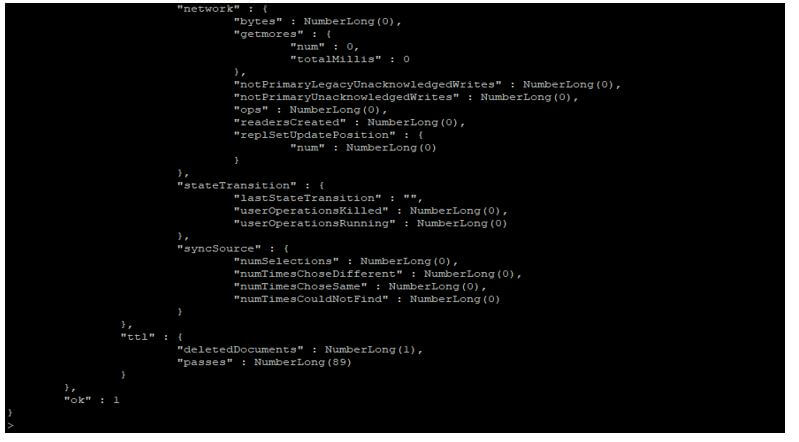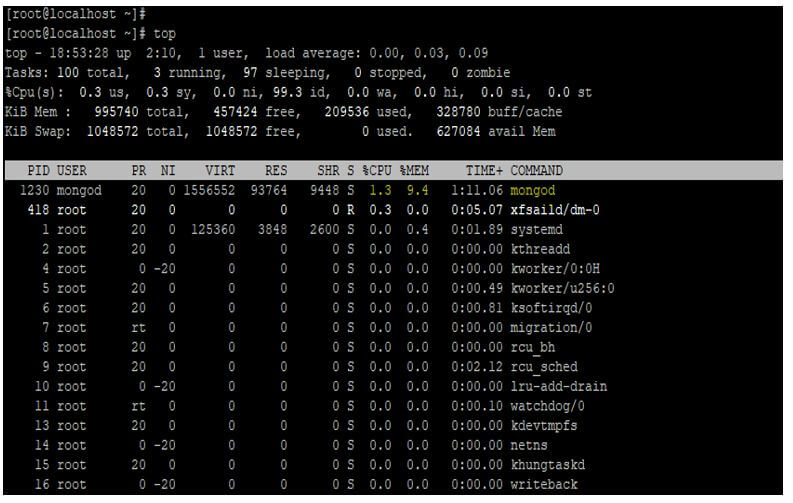Updated March 8, 2023

Introduction to MongoDB Performance
MongoDB performance is based on different types of parameters and options, basically, we can improve the performance of MongoDB by creating the index on the field. Also, we can check the number of sessions which was running on the database server, and also we can check any session is locking to another session. To improve the MongoDB performance we can also check the memory and CPU utilization, we can check which process is consuming more memory and CPU. We can create the index using create index command query, we have created the index on the field which was used more times.
Syntax of MongoDB Performance
Below is the syntax of MongoDB performance:
1. To check the MongoDB performance need to check the connection status.
db.serverStatus ()
It will display all the session which was running on the server.
2. To check the MongoDB performance need to check the locked connection.
db.serverStatus () .locks
It will display all the session which was locked.
3. To check the number of connection which was running on the database server.
db.serverStatus () .connections
It will display all the session which was running on the server.
4. Create the index on the field to improve the performance.
db.name_of_collection.createIndex ( { field_name: number } )
5. Use projections operator to return only necessary data.
db.name_of_collection.find ( { }, { name_of_filed: “value”} ) .sort ( { field_name: “value” } )
Parameters explanation:
- Server status: This parameter is used in performance to check the server status. We can check all the details of connections that were running on the database server.
- Locks: This parameter is used with server-status command to check the locking status for the sessions. It will display all the locking sessions from the database server.
- Connections: This parameter is used with the server-status command to check the number of connections from the database server. It will display all the number of connections which was running on the database server.
- Create index: This command is used to create the index on a specified field. We have to create the index in MongoDB to improve the query performance.
- Field name: This is the name of the field which was used to create the index. After creating an index on the field we can improve the performance of the query.
- Name of collection: This is defined as the collection name on which filed we have to create the index. Also, we can use collection names with different methods in MongoDB.
- Find and sort method: This is the method that was used with the collection name to retrieve the documents from the collection.
How to Analyze Performance in MongoDB?
There are multiple ways available in MongoDB to improve the database and query performance. To improve the MongoDB performance we need to check the following points:
- Check and examine the profiling and pattern of query.
- Need to review the indexing and data model which was used for query to improve the performance.
- Check the appropriate join operations of the query. And also use the limit and sort method to retrieve the appropriate data as per user need.
- Check the proper use of memory.
- Check replication is working properly and the server is sync with each other.
In MongoDB aggregation, indexing on-field and ad hoc queries are used to provide a way to faster access the data. Basically, we can say that MongoDB by default is the distributed database that allows the user to horizontal scalability without any change in application code. To improve the performance we need to check at different levels. First, we need to check all session which was running on the database server. After checking all the sessions need to check is there any locking existed on the database server or not. Then check there is any long-running query is running on a server. If suppose we have found any long running query we need to check the indexing of that particular collection from which query fetching the data.
Also, we need to check network connectivity between client and server. Also, we need to check the memory and CPU utilization of the server, to improve the query performance. Also as per need, we need to add the hardware resources of the database server. We can add more hardware resources as per the performance of the database server. Also, we can use horizontal scaling and sharding to improve the better performance of the database servers.
Examples of MongoDB Performance
Given below are the examples of MongoDB Performance:
Example #1
Check all the sessions from the database server to improve the performance.
- The below example shows to check the session of the database server.
- We can check the session by using server-status command.
Code:
db.serverStatus ()
Output:
Example #2
Check the number of connections from the database server to improve performance.
- The below example shows to check the number of sessions from the database server. We can check the number of sessions by using the server-status command.
- In the below example, we can see that the current session is one and the available session is 51199 and the active session is 1.
Code:
db.serverStatus () .connection
Output:
Example #3
Check the memory and CPU utilization of the database server.
- We need to check memory and CPU utilization to improve the performance of the MongoDB database server.
- We have to check the memory and CPU utilization by using the top command.
Code:
top
Output:
Example #4
Create the index on the collection field to improve the database performance.
- The below example shows that create an index on the collection field to improve the performance of the database server.
- We have created the index on stud_name field from the collection name as max_collection.
Code:
db.max_collection.createIndex ( { stud_name: 1 })
Output:
Example #5
Check the locking session from the database server to improve performance.
- In the below example, we have checked the session which was locked on the database server.
Code:
db.serverStatus ().locks
Output:
Conclusion
MongoDB performance basically defined as improve the performance of the database server by creating the index on the collection field. We can also use the projection operator to improve the performance of the query. Also, we can use the server-status command to check the connection details from the database server.
Recommended Articles
This is a guide to MongoDB Performance. Here we discuss the introduction, how to analyze performance in MongoDB? and examples respectively. You may also have a look at the following articles to learn more –







